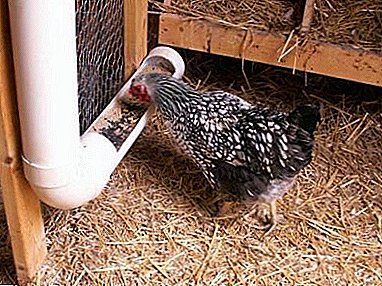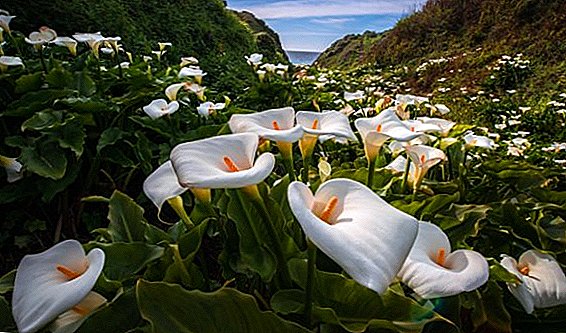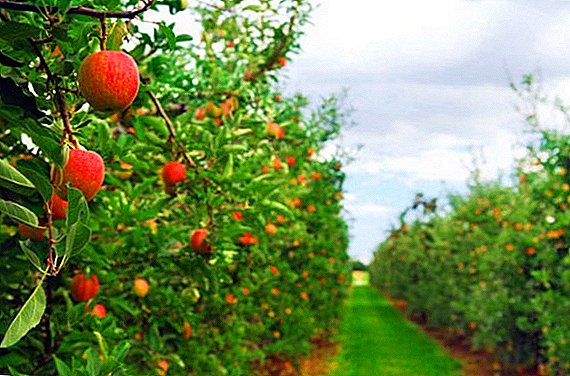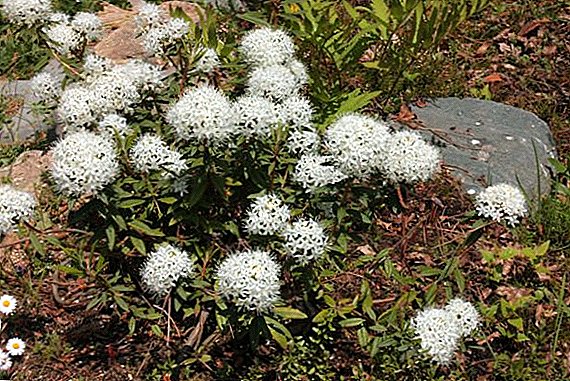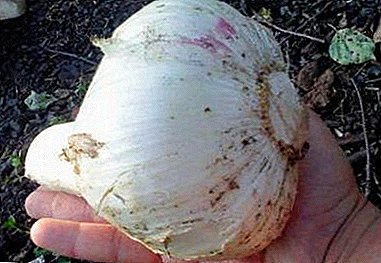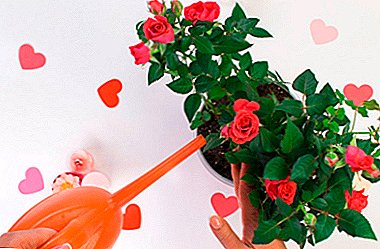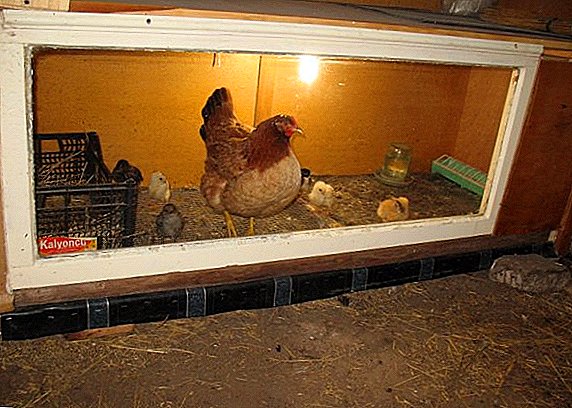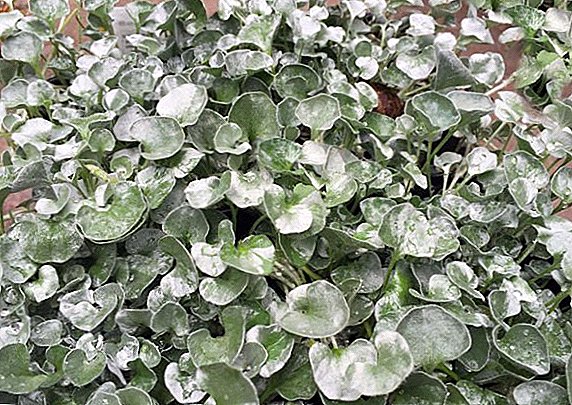 Dikhondra "Silver waterfall" refers to the genus of convolvulidae - it is ampelous perennial decorative leafy lianas. This plant in nature settled in East Asian, Australian and American countries.
Dikhondra "Silver waterfall" refers to the genus of convolvulidae - it is ampelous perennial decorative leafy lianas. This plant in nature settled in East Asian, Australian and American countries.
Dichondra is valued for its decorative appearance, which is preserved thanks to densely located leaves and creeping branches, therefore, dichondra is used to create compositions in landscape design and as decoration for a gazebo, garden, and loggia.
Biological features
Dikhondra "Silver Falls" has a rounded, pubescent leaves, resembling silver coins. This variety of silver dichondra has surface roots, and shoots reach a length of one and a half meters. More appreciated is the "Silver Waterfall" for the decorativeness of shoots and leaves, because this variety of dichondra blooms with inconspicuous, small purple flowers. Therefore, they planted "Silver Falls" often with abundantly flowering plants: it complements the composition with essential greens. 
Did you know? Dichondra was first discovered at the end of the 18th century in East Asia and spread throughout the world. Initially, this plant did not become popular, as it did not differ in any exotic species, but resembled an ordinary ampelous plant. But when landscape designers realized that dichondra could be used as a soil cover for rock gardens, it took pride of place among other ampelous flowers.
Growing seedlings at home
In order to grow dichondra seedlings at home, it is necessary to follow certain rules of planting and care, as well as features of the selection and preparation of planting material, which are easiest to carry out in accordance with the photo.
Optimal timing
Growing "Silver Falls" from the seeds is easy, but it will take a lot of time. Sow seeds can begin in late January - early February. Considering that dichondra develops slowly, growing from seeds will take a long period: just by the time dichondra needs to be planted in open ground, it will grow a little and get stronger. Thus, the seedlings will be better accepted and quickly turned into an adult plant.
As ground cover plants, they also grow armeria, saxifrage, nemofilu, creeping survivors, creeping thyme, camelion, and periwinkle.
Seed preparation
In order for all the seeds to be taken and equally well sprouted, it is recommended to inspect them for damage, as well as to have no traces of fungus and other clearly expressed signs of poor-quality planting material. Before sowing, seeds should be kept for 12 hours in water, in which any growth factor for ornamental plants should be added. The stimulator must be purchased at a specialty store and used in accordance with the instructions indicated on the product label.
Capacity and soil for seedlings
The capacity must be chosen large enough, but shallow, because the root system of this plant is located in the upper soil layer.
Important! Care should be taken to ensure good drainage, since dichondra does not like stagnant water and does not tolerate excessive soil moisture. If you do not worry about it, then it can die from rotting of the root system.For planting seeds it is necessary to prepare the soil, which will contain fertile soil and sand in equal quantities. Before sowing the plants, the soil must be well moistened.

Sowing depth
The depth of sowing of dichondra seeds should be small: it is usually sown in shallow, up to 0.5 cm, the wells and lightly sprinkled with earth on top. It is not recommended to strongly press the top layer of soil.
Care of crops
After the seeds are placed in the soil, care must be taken that the soil does not dry out. For this recommend spray with a spray top layer of soil, so that it does not lose its looseness. To seed well sprouted, recommend cover the container with filmseeking greenhouse effect. It is recommended to keep the crops in a warm place, so that the air temperature was not lower than +22 degrees. Before the first shoots appear, it is necessary to keep sufficiently high humidity in the greenhouse.
If you did everything correctly, then somewhere in a week the first shoots will appear.
Did you know? In southern California in the 60s, dichondra was used as an alternative to lawn grass, as it was considered resistant to trampling and could tolerate slight frost. However, such an experiment was not crowned with success, because it took tremendous effort and time to achieve an ideal lawn.
Seedling care
After the appearance of the first shoots of Dichondra, it is necessary to start accustoming the plant to the open air: for this, the greenhouses are regularly aired by opening the film for an hour or two every day. After the plants are fully accustomed to the open air, after 1 week it is recommended to reduce the humidity - spray less often.
Water the shoots of dichondra regularly, as soon as you notice that the soil has dried. You should also feed sprouts with mineral fertilizers for ornamental plants, which you can buy in a specialized store and use according to the instructions on the label.
The first true leaves appear only a month after the sprouting of the plant. Just at this time it is recommended to hold dive seedlings. Seedlings are seated in separate pots, and several copies can be placed in each pot.
Aeschinanta, petunias, calarahoa, surfinia, bacopa, verbena, kampanula, lobelia will look great in pots.
Planting seedlings in open ground
When it is warm outside, you can take out the seedlings so that it gets used to the open air, and after a while it can be planted in open ground.
Optimal timing
It is possible to plant dichondra seedlings in open ground, when the air temperature during the day will not fall below +20 degrees, and at night not lower than +15 degrees; estimated landing time: The end of May is the beginning of June.
Choosing a place
Dichondra can be planted in the sun and in the shade, but the Silver Waterfall prefers a brighter place and develops well in the sun. Soil for planting, you can choose any, since this plant is not demanding of this factor. But if you provide dichondra with loamy and well-hydrated soils, with acidity of pH 6-8, then the plant will feel excellent.
Site preparation
Before planting dichondra in open ground, you must first prepare the site. To do this, dig up the ground well and remove all the weeds, as well as their rhizomes, which will hinder the development of the plant. 
Important! Try to plant dichondra not very close to other plants, while it is still rather small and weak, because their roots can inhibit its development and the growth of the root system.After the soil is dug up, it needs to be well plowed and moistened.
Optimal scheme
Considering that the plant develops rather slowly, this factor should be taken into account when landing dichondra. If you plan to use dichondra as a ground-cover plant, then it is recommended to plant it at a distance of 15 cm from each other, but if it will be done in order to combine dichondra with other plants in the future, then it is recommended to plant it at a distance of 30-40 cm from each other .
For planting seedlings need to do wells up to 3 cm deep, so that the root system and 1/3 of the dichondra escape completely fit into them.
Use in garden compositions
Plants can be planted both separately and in combination with other flowers. Dichondra can be combined with petunias, begonias, pelargoniums, fuchsias: they will make an excellent composition and will look very impressive together. Often also combine different varieties of dichondra, for example, "Silver Falls" can be combined with "Emerald Falls": they will present an excellent picture of a juicy and fluffy coating of silver and bright green shoots.
Care Tips
In order to grow a beautiful and healthy plant, it is necessary to adhere to some rules of care for dichondra.
Watering
Watering is a very important part in the care of the plant, it must be carried out regularly, as soon as the soil dries out a little. It is important to ensure that during subsequent irrigation the soil is not excessively wet, which can lead to root decay.
Top dressing
In order for dichondra to actively develop and delight the eye with its abundantly growing silvery leaves and long shoots, it is necessary to make organic and mineral fertilizers in a timely manner. Fertilizing is recommended to be carried out once a week, while alternating mineral fertilizers with high nitrogen and organic fertilizers. The ideal dressing for silver dichondra is well suited, but there is a lot of them in a specialized store, and you will be told which one is better to use.
Fertilizing is recommended to be carried out once a week, while alternating mineral fertilizers with high nitrogen and organic fertilizers. The ideal dressing for silver dichondra is well suited, but there is a lot of them in a specialized store, and you will be told which one is better to use.
Pruning
In order for the dichondra to form a beautiful and lush crown, it is recommended to conduct autumn pruning of the shoots. Before dichondra go to winter, it is necessary to cut off all the shoots by 10 cm: this manipulation will provoke the spring branching of dichondra next year.
Reproduction by layering
When you are pruning Dichondra "Silver Falls", the branches that are cut off, you can try to root. It is worth choosing healthy, whole and strong branches. They can be placed in a container with the soil, as well as for growing from seeds, and removed under the nonwoven covering material.
The stem is buried in the soil and pressed in several areas, then the plant is watered with a means of stimulating growth. After a certain time, on the site that was covered with soil, roots form, and dichondra sprout will be formed.  It should be borne in mind that the air temperature should not be below 20 degrees, so rooting should be carried out on window sills in the room or heated verandas.
It should be borne in mind that the air temperature should not be below 20 degrees, so rooting should be carried out on window sills in the room or heated verandas.
How to survive the winter
Dichondra is very sensitive to a decrease in temperature and often simply does not survive the winter frosts, so the question is how to keep the plant in winter. The effect of low temperatures on dichondra is due to the fact that during the season it cannot grow to impressive size, this requires more than one year for a flower, as it grows rather slowly. Of course, it will be a shame if your favorite, which you have grown and cherished for so long, will simply die during the winter, and you will have to do everything first.
Therefore, it is necessary to consider all possible ways to save the plant and help him to winter.
The whole wintering process will be much easier if the plant was planted in pots. In this case, you just bring dichondra into the room. But here is not so simple. Dry apartment air, which most often prevails in heated premises, is capable of destroying a moisture-demanding plant in winter. To protect the dichondra from drying out, it is necessary to provide it with a sufficiently cool room, the temperature of which will be not higher than +18 degrees. You can organize the temperature lower, but if it is below 15 degrees, the plant will stop growing.
To protect the dichondra from drying out, it is necessary to provide it with a sufficiently cool room, the temperature of which will be not higher than +18 degrees. You can organize the temperature lower, but if it is below 15 degrees, the plant will stop growing.
If the plant was planted in open ground, then in this case everything is more complicated. There is a very high probability that during a snowless winter the plant will freeze out, given that the root system of dichondra is in the upper soil layer. To try as much as possible to save the flower in winter, in the fall, when the first small frosts begin, plant cover sawdust or dry foliage. It is recommended to carry out such manipulation especially carefully, and the layer of shelter should be at least 6-8 cm.
Thus, dichondra is a plant that requires a lot of attention and time. If you decide to plant it in open ground, then be prepared for the fact that in the spring you may not see it. But most gardeners are not afraid of such a possibility, because if you worry about the plant and surround it with maximum attention, then as a reward it will decorate your yard with abundant green waterfalls of incredible beauty.


